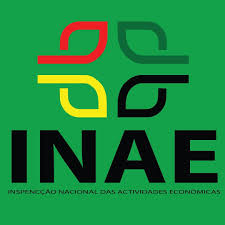By Lawrence Seretse
MASERU, LESOTHO – Mozambique sits at the center of Southern Africa’s economic ambitions, its ports and corridors offering the gateways to global markets. But as leaders gathered at the 11th SADC Multi-Stakeholder Water Dialogue, it became clear that these lifelines the Maputo, Beira, and Nacala corridors carry both promise and peril.

Mozambique’s strategic corridors are designed to power the African Continental Free Trade Area (AfCFTA) by moving minerals, farm produce, and manufactured goods across borders. The Maputo Development Corridor, linking South Africa’s industrial hub to the Indian Ocean, is often described as the best performing in Sub-Saharan Africa. Further north, the Beira and Nacala corridors are earmarked as future agro-industrial belts, central to the region’s food exports.
But for all the opportunity, the question raised in Maseru was blunt: can Mozambique secure the water needed to power these industries without undermining ecosystems and communities downstream?
Mozambique is a downstream state on several key rivers, including the Incomati, Maputo, and Zambezi, leaving it exposed to both upstream decisions and climate extremes. INMACOM, the tripartite commission with South Africa and Eswatini, is one of the institutions tasked with balancing these pressures.
“For us really, in our cooperation, we found that the extreme events are really affecting a lot of what happens downstream,” said INMACOM Executive Secretary Sindy Mthimkhulu. She pointed to wetlands, mangroves and floodplains that act as natural buffers but are increasingly under strain.
Her warning was also political. “The original Maputo Development Corridor program collapsed because there was a belief that the projects were not evenly distributed across all the countries involved,” she said. “The governance structure of an RBO gives all member states an equal voice and ownership of the plans, deliberations and outcomes.”
Mozambique’s role in the Southern African Power Pool is pivotal. Hydropower assets like Cahora Bassa, and planned projects such as Mphanda Nkuwa, anchor regional power exports. Transmission lines from Mozambique cut across the region, making it indispensable to SADC’s energy vision.
Yet every new hydropower scheme raises questions about water allocation—how much should go to turbines versus irrigation, industry, and ecosystems. With poverty rates in some corridor regions above 60 percent, local benefits will be scrutinized.
Speakers at the Maseru dialogue agreed Mozambique’s corridors cannot be treated as transport projects alone. They must embed water, energy, food, and ecosystems planning from the start. That means binding cooperation between RBOs like INMACOM and ZAMCOM and corridor authorities, harmonized environmental safeguards, and investment in agro-industrial value chains that make local communities partners in growth.
Dr. Patrice Kabeya – SADC Secretariat, Water Division
“In the past, we have not been efficient in how we operate our hydropower systems, with countries acting in isolation and often missing the bigger picture of how these resources could be coordinated for maximum benefit. To move forward, we must ensure greater integration in how we manage these assets. At the same time, transmission infrastructure is critical. Without strong, interconnected transmission lines across the region, we cannot unlock the full potential of regional energy trade. Building that infrastructure is not just an energy priority, it is a water and development priority for SADC as a whole.”
Ms. Simone Goertz – German Government
“Germany has been supporting transboundary water management in the SADC region for more than 20 years, and we are proud to have walked this journey together with our partners. Our commitment to the nexus reflects our belief that water is not just a resource but a driver of regional integration, resilience and prosperity. It is only through partnerships, through institutions like ORASECOM and the SADC Secretariat, that we can achieve sustainable development and ensure that water continues to be a source of cooperation and peace in Southern Africa.”
Ms. Anna Renieri – European Union Delegation in Lesotho
“Lesotho, as the water tower of Southern Africa, plays a critical role in ensuring regional water security. The resources here are essential not just for Lesotho, but for the prosperity of the wider SADC region. Since 2021, the Team Europe Initiative on Transboundary Water Management in Africa has implemented 51 actions worth €578 million, with SADC as one of the priority regions. Lasting water security in Southern Africa can only be achieved through action and coordination at all levels—local, national, regional, and continental. The EU Global Gateway is our vehicle for sustainable investment. Through it, we aim to support water-smart infrastructure and solutions that can unlock trade, energy, and food security across SADC.”
Mozambique’s corridors remain vital to SADC’s integration drive. Whether they become true engines of resilience, or vectors of vulnerability, will depend on how water is governed at every step. (Moz24h)







